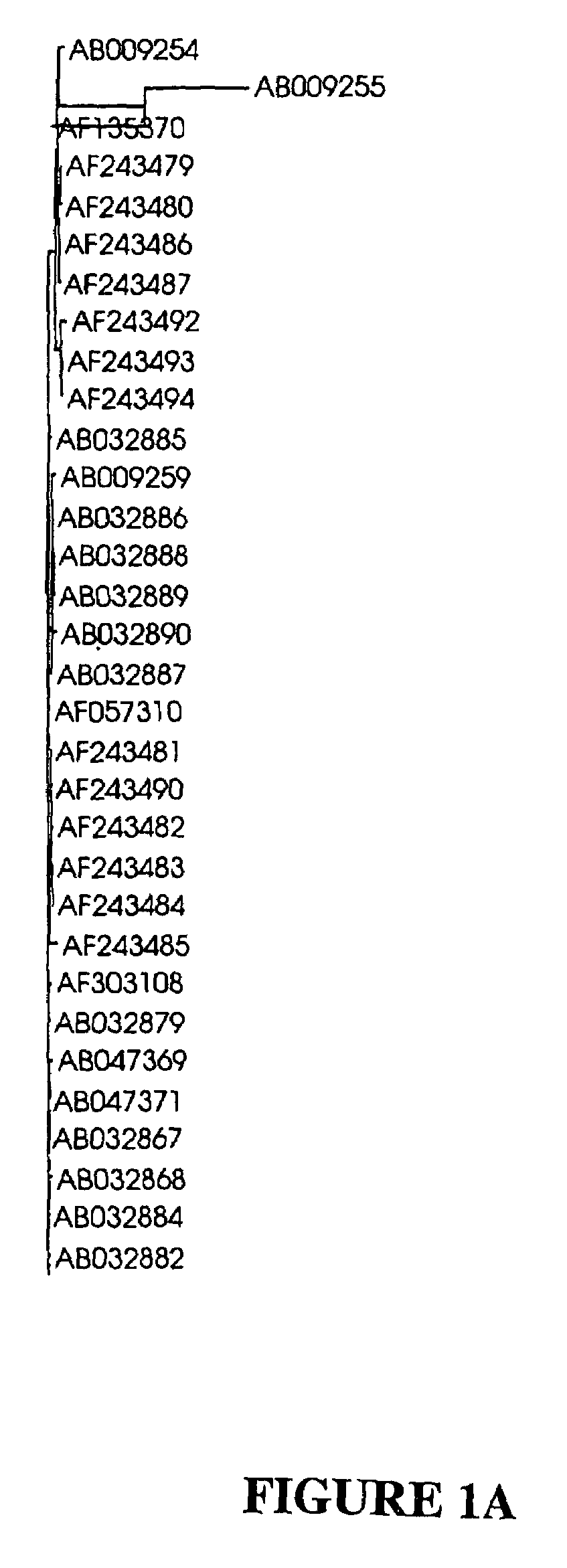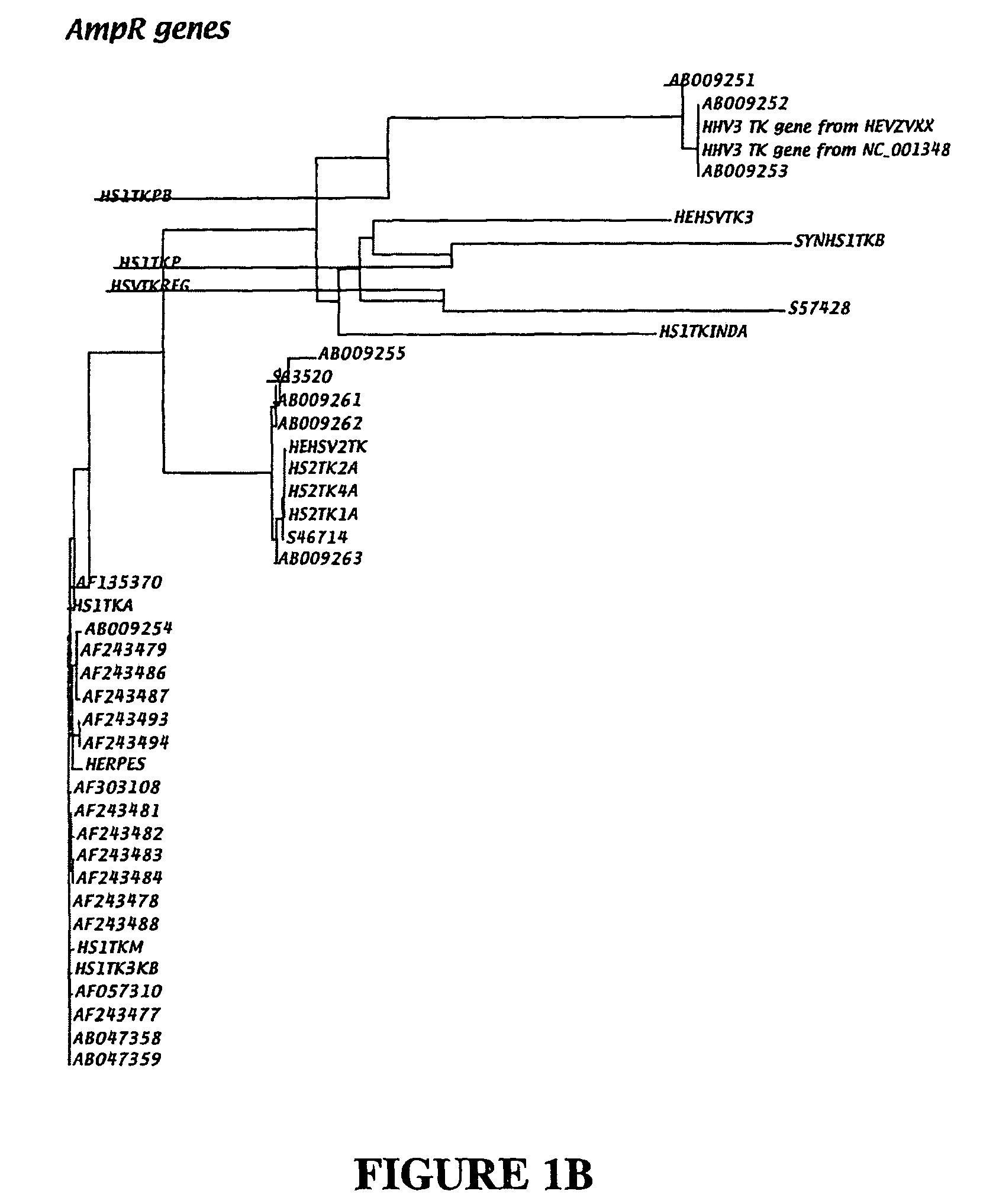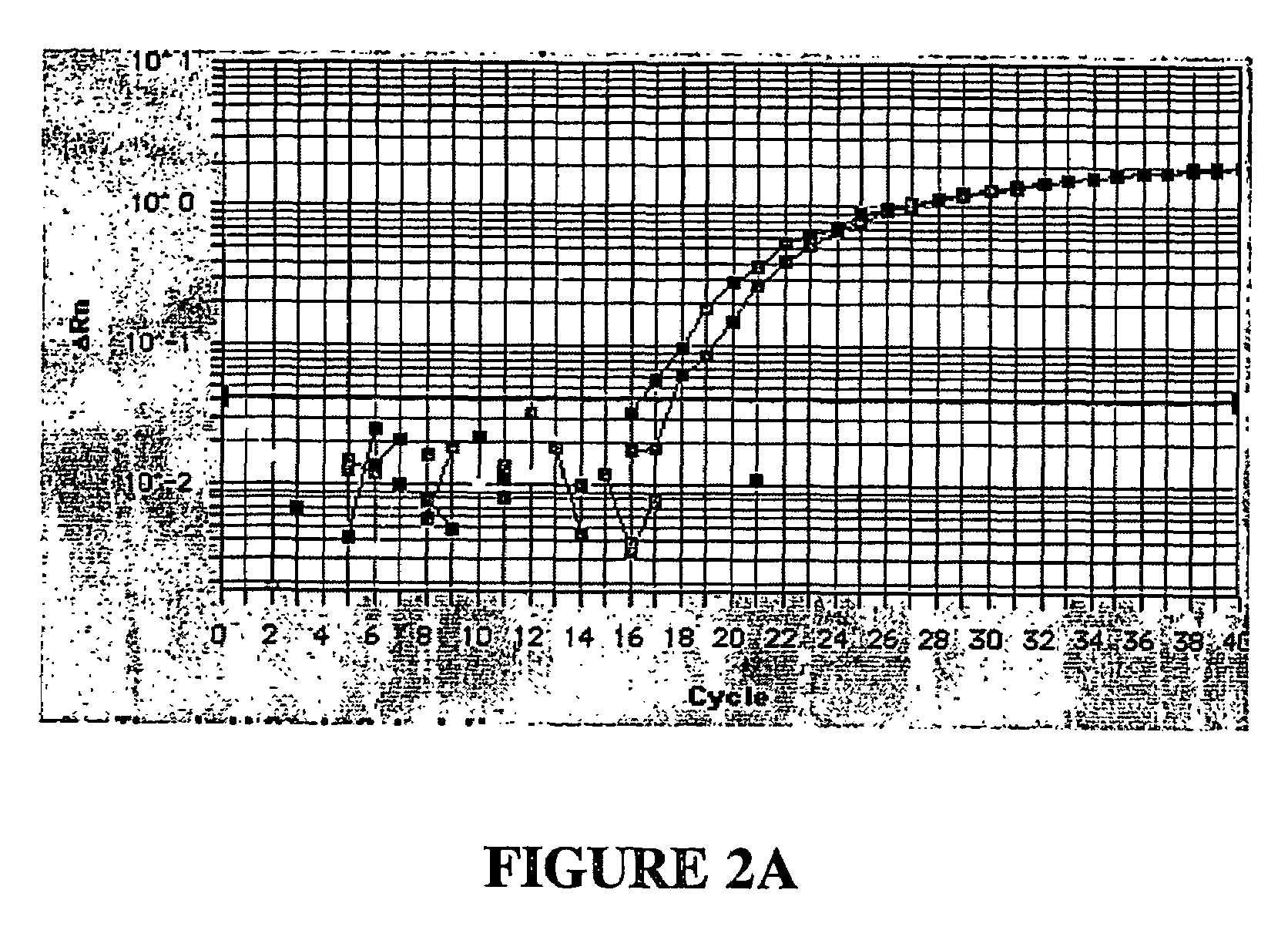Detection and quantification of human herpes viruses
a technology detection method, applied in the field of detection of human herpes virus, can solve the problems of low viral level detection, insensitive methods, and several days elapse before a patient is diagnosed, and achieve the effect of rapid and sensitiv
- Summary
- Abstract
- Description
- Claims
- Application Information
AI Technical Summary
Benefits of technology
Problems solved by technology
Method used
Image
Examples
example 1
Designing Primers and Probe for HHV1
[0092]This section details an application of the inventive bioinformatics approach to HHV1. GenBank lists more than 250 entries of interest for HHV1, including one entry for a complete genome, several open reading frames (ORFs). and plasmid clones. The tk gene of HHV1 was chosen as a target for assay development, because more than 100 tk gene entries were found in GenBank. In addition, tk gene activity is known to be a good marker of viral infection.
[0093]In the region of nucleotides 301-600 of the GenBank sequence entries for HHV1 tk gene, alignment of the sequences revealed few sequence differences, indicating that tk genes in different strains of HHV1 share close genetic relationships. Phylogenetic analysis (FIG. 1A) confirmed the likelihood of close genetic relationships within tk genes of different HHV1 strains.
[0094]A segment of the tk gene, referred to as “HHV1 tk gene amplicon” or “HHV1 tk amplicon” (SEQ ID NO 48; see Table 3A), was chose...
example 2
Designing Primers and Probes for HHV1 and HHV2 Screening Assays
[0100]As detailed above, the present invention contemplates a bioinformatics approach to the design of primers and probe for screening assays that, pursuant to the invention, will detect multiple types of virus in the course of a single reaction. Use of a screen-assay format reduces the initial number of separate assays that should be required to test different types of virus. Once a screen assay tests positive, then separate assays are required to detect individual type of virus that were included in the screen-assay design.
[0101]This portion of this specification relates the development of a screening assay, according to the present invention, for detecting human herpes viruses HHV1, HHV2, and DR HHV2. To this end, the inventors chose the tk gene as the target; hence, the informatics approach described above was performed for the tk gene from the three mentioned viruses, respectively.
[0102]GenBank contained more than 1...
example 3
Preparing Calibration Curves and Quantifying Number of Copies of Virus in a Sample
[0107]It often will be the case that a polynucleotide can be purchased or synthsized that corresponds to the segment of the target gene which is selected, via the bioinformatics approach of the present invention. Alternatively, an amplicon selected by the bioinformatics procedure in the invention can be amplified from an extract of genomic DNA using the amplification primers described above and standard molecular biology techniques. The amplicon is cloned into a DNA construct, such as, plasmid pCR 2.1, a product of Invitrogen (Carlsbad, Calif.) that has a replication origin, to generate multiple copies of the cloned plasmid.
[0108]The cloned plasmid serves as a reference standard for calibration. (“Standards” are samples containing a known number of copies of a target nucleic acid sequence.) For calibration, inventive assays for concurrent amplification and detection of target gene sequence in the clone...
PUM
| Property | Measurement | Unit |
|---|---|---|
| Fraction | aaaaa | aaaaa |
| Length | aaaaa | aaaaa |
| Length | aaaaa | aaaaa |
Abstract
Description
Claims
Application Information
 Login to View More
Login to View More - R&D
- Intellectual Property
- Life Sciences
- Materials
- Tech Scout
- Unparalleled Data Quality
- Higher Quality Content
- 60% Fewer Hallucinations
Browse by: Latest US Patents, China's latest patents, Technical Efficacy Thesaurus, Application Domain, Technology Topic, Popular Technical Reports.
© 2025 PatSnap. All rights reserved.Legal|Privacy policy|Modern Slavery Act Transparency Statement|Sitemap|About US| Contact US: help@patsnap.com



